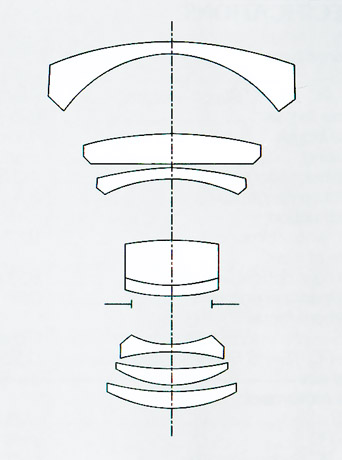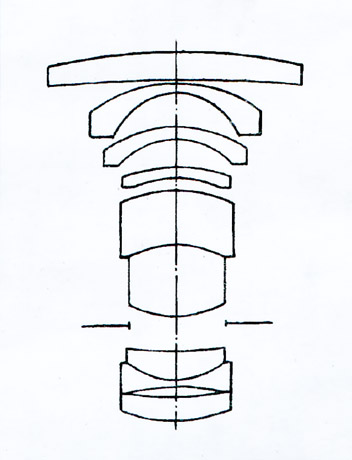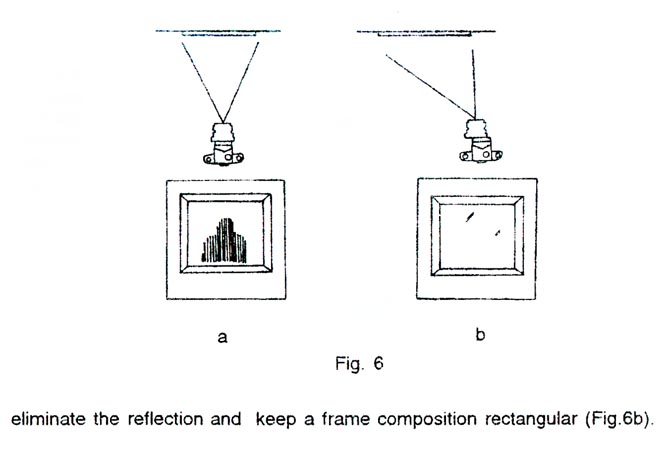
[45diag: Lens diagram for the 45mm shift and shift/tilt lenses from Hartblei] This is clearly identical to the lens diagram for the Mir-26 wide-angle lens, which can be seen here. |

[55diag: Lens diagram for the 55mm Arsat shift lens] |
Other Advantages of Shift Lenses

[45diag: Lens diagram for the 45mm shift and shift/tilt lenses from Hartblei] This is clearly identical to the lens diagram for the Mir-26 wide-angle lens, which can be seen here. |

[55diag: Lens diagram for the 55mm Arsat shift lens] |
The instruction manuals that come with the 45mm Hartblei Super-Rotator and the 55mm Arsat shift lens suggest other circumstances where using these lenses can be advantageous.
Turn your 6×6 camera into a 6×8 or 6×9cm camera!
Hartblei and Arsat suggest that for some shots, you can get the equivalent of using a much larger format.

Paris shots from Super-rotator instruction manual
– although it looks as though they either took the pictures with
a 645 back or cropped both images
Avoid appearing in mirrors or shop windows
To avoid your reflection appearing in a mirror or shop window, you can move to the left, and then shift the lens to the right, to get virtually the same image, minus the reflection!

These shots are from the Hartblei Super-rotator instruction manual
(note the Pentacon Six with Waist Level Finder!)
The Arsat 55mm shift lens manual illustrates the same point with a diagram:

(note the Kiev 60 with metering prism – but then of course it is made
by Arsenal, who make the lens!)
Eliminate obstacles
The Arsat manual also explains how on some occasions you can not only eliminate reflections, but even actual objects, such as street lamps or telegraph poles, with careful use of horizontal shift. It illustrates the problem and the solution with another diagram:
But there is more! As well as shifting lenses, it is possible to tilt them. See the next section!
To go on to the next section, click below.
Next section (Tilt lenses)
| For details of mount compatibility limitations in general, and movement limitations when using the tilt and shift lenses with the Exakta 66 with the Exakta 66 TTL metering prism, see the next section. |
To go back to the section on Other Accessories, click here.
To go back to the beginning of the lens tests, click below and then
choose the focal length that you want to read about.
Back to beginning of lens tests
© TRA August 2007, November 2008